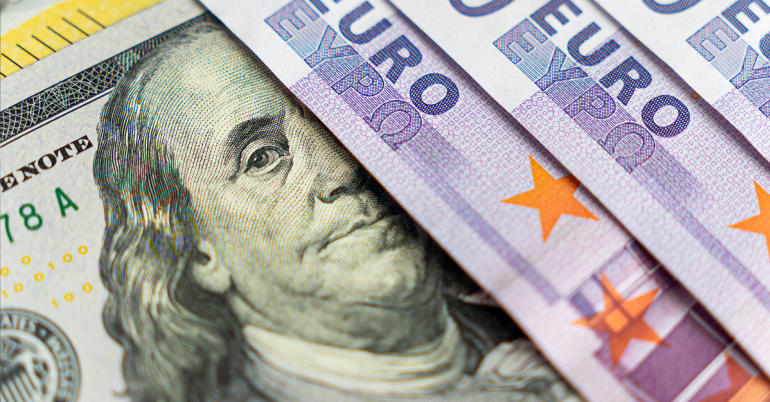Aside from the rise of a seemingly all-powerful US technology sector, albeit until recently, the last decade has also seen another sign of US dominance : the strength of the dollar. While the appreciation of the US currency is evident today – it's one of the Trump administration's battlegrounds – it has taken time for the investment world to associate these two phenomena.
This currency and sectoral progression are clearly connected through a key economic variable: productivity. As an economic concept, productivity is often poorly measured and sometimes misunderstood, yet it is probably one of the central variables for understanding the current cycle and its challenges. This issue of Simply put revisits the importance of productivity in explaining currency performance, questioning the dollar's destiny for the near future. Does strong productivity equal a strong currency?
Read also: Addressing uncertainty through risk-based portfolio management
How productivity underpins currency strength
There are many ways to measure productivity, and consensus on this subject is difficult to achieve. Less ambitious economists tend to fall back on what's called the Solow equation – named after Nobel Prize winner Robert Solow – which connects economic growth to population growth and investment, and making what these two factors don't explain (this ‘residual’) a measure of productivity. If growth doesn't reflect the progression of production factors (demographics and capital), then it must be due to efficiency gains, which is productivity. Any self-respecting economist knows this relationship inside out and knows how to use it to measure fluctuations in a country's productivity (yes, productivity fluctuates).
Figure 1 uses the Solow productivity measure to compare the progression of different countries' currencies (in effective exchange rates). Regardless of the period considered (the last two, five or ten years), the conclusion is the same: strong currencies belong to countries with productivity gains. In the G10, there are only two: the US dollar and the Swiss franc. This empirical relationship between productivity gains and currency has been understood for a long time: productivity gains generated by an economy shape the financial performance of an economy's investments. An economy with productivity gains attracts investment flows due to its high financial returns.
FIG 1. Productivity gains vs currency progression1
It's sometimes difficult to know which came first: while the dollar's progression probably reflects the economic effect of the American technology sector, the Swiss case is different. The strength of the franc forced the Swiss economy to adapt, resulting in productivity gains.
Currency details
While this long-term perspective is interesting, what about the two particular cases on investors' minds since the start of this year: the dollar and the euro? Figure 2 compares productivity and currency progression in both areas since the 1980s for the dollar and the 1990s for the euro. The graph clearly shows the strong connection between the value (not the returns) of currencies and productivity.
Two of the dollar's major progressions (in the 1990s and over the last four years) clearly appear to be productivity booms. If the progression of US productivity in 2005-2007 didn't drive up the dollar's value, part of the explanation is that European productivity growth during that period dominated that of the US as it marked a period of strong bank and infrastructure investment in Europe.
The EURUSD currency fluctuations relative to productivity gains underline the catastrophic nature of the current situation. A decade of under-investment in Europe has weakened the eurozone's growth potential to the point of durably weakening its currency's value. The double effect of an AI challenger (DeepSeek2) emerging and the reindustrialisation of the US economy, along with Europe’s investment plans, could well reverse this situation for the decade ahead. Nonetheless, beware of the groundswell of productivity: underestimating its effects means losing sight of the direction of the world's major currencies.
FIG 2. Comparison between currency fluctuations and domestic productivity gains3
Read also: What Liberation Day's reciprocal tariffs mean for investors
The investment implications for multi-asset investors
Our analysis of currencies and productivity does not have a direct implication for our All Roads strategies. However, in the climate of uncertainty that naturally surrounds these major potential transitions, the diversification between hedging assets and cyclical assets presented by our strategies, as well as market exposure in line with their historical average, seem appropriate to us. Prudence remains essential during these major transition periods – the disruption of our trend signals since the beginning of the year is just one of many signs.
Simply put, the interplay of relative productivity could enhance the value of the euro versus the dollar in the coming years.
To learn more about our All Roads multi-asset strategy, click here.
Macro/nowcasting corner
The most recent evolution of our proprietary nowcasting indicators for global growth, global inflation surprises, and global monetary policy surprises is designed to track the recent progression of macroeconomic factors driving the markets.
Our nowcasting indicators currently show:
- Our growth indicator has decreased, particularly in the US – due to its declining production sector, despite nearly 50% of the data showing improvement worldwide.
- Our inflation nowcaster remained unchanged this week and continues to stay above the 50% level.
- Our global monetary policy indicator fell, reflecting a deterioration in eurozone consumption.
World growth nowcaster: long-term (left) and recent evolution (right)
World inflation nowcaster: long-term (left) and recent evolution (right)
World monetary policy nowcaster: long-term (left) and recent evolution (right)
Reading note: LOIM’s nowcasting indicator gathers economic indicators in a point-in-time manner in order to measure the likelihood of a given macro risk – growth, inflation surprises and monetary policy surprises. The nowcaster varies between 0% (low growth, low inflation surprises and dovish monetary policy) and 100% (the high growth, high inflation surprises and hawkish monetary policy).










